Disclaimer about Spoilers
The article below was written to remain as spoiler-free as possible. Therefore, its focus is noticeably greater on gameplay and visuals than on story, but some details which do not compromise the plot's integrity are shared for a coherent review of Final Fantasy VII Rebirth.
A Long-Awaited Reunion
Have you ever reconnected with a long-time friendship after many years? The one you remember occasionally, but can't keep in touch with and exchange messages frequently? Well, I had the opportunity to have this experience last year.
It had been five and a half years since the last time we had sat down at a table to talk, to listen, share stories, experiences, vent and just enjoy each other's company - Like a flash in our heads, we remembered that we first met 15 years ago.
From an abstract point of view, lasting friendships are a natural symptom of human life and how affinities and circumstances bring people closer or further apart as the months or years pass, but during my time playing Final Fantasy VII Rebirth, perhaps the most emotional conclusion onhow friendships last has come naturally: no matter how much we age or how much our lives change and alter our perspectives, or how long we go without even sending a message to each other, we are still us and they are still them.
When we stop to talk or sit at a table, we still recognize each other, we look at a certain attitude and think “that’s really like you!”. People change, time and experience do this, but we can still recognize the essence and traits of these bonds when we spend so many years together.
Just like a decade-long friendship, Final Fantasy VII Rebirth brings a feeling of familiarity with its essence, that taste of reunion. Its core theme around bonds goes beyond the relationships between characters to the player's relationship with the world presented in it and with the main characters.
When you look at every detail of Rebirth, you can still say, “This is definitely the Final Fantasy VII I know,” and when you realize it, its story captivates both who you are now and who you were when you first played the original game.
A Story About Relationships and Bonds

Final Fantasy VII Rebirth follows in the footsteps of its predecessor and expands the game's universe, this time around the bonds, relationships and dramas of its main characters and the way they interact with the rest of the world on a journey through different regions and cities around the planet searching for Sephiroth.
Both in narrative and in gameplay mechanics, the new title makes a point of reminding us how important bonds are, and each dialogue evokes, for those more accustomed to the series, the feeling of meeting old friends.
Thoughts like “Wow, that's so like this character!” when they act the way we know they'd do, or “I can't believe they did that!” under a sudden plot twist are very common, and the empathy when we see them suffer puts us in the eighth-person spot of the journey: the laughter and tears are genuine, the silly smile in a relaxing dialogue is sincere, and even the anger of seeing them being wronged feels too real - And Rebirth is meant to stir so many kinds of emotions on the players.
You Are Not Alone: the excellent use of immersive experience
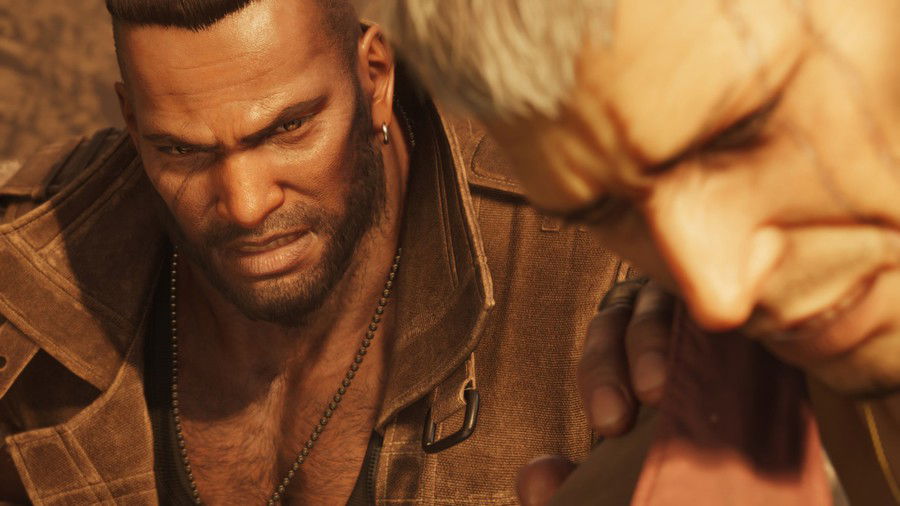
Many games acclaimed by fans and critics in recent times have relied on a feature to make the experience more immersive and expand players' sense of empathy with characters or the plot: the control over different characters at key moments, placing to you the role of walking them through their destination and watching the ever-inevitable turn of events.
One of the most famous works for the phenomenal use of this resource in the recent industry was Naughty Dog's The Last of Us, where controlling different characters in certain parts of the game makes us identify and empathize with their motivations through imposedrole playing, placing us at the character's shoes, with no means of changing how the story unfolds even though we disagree with the means for their ends.
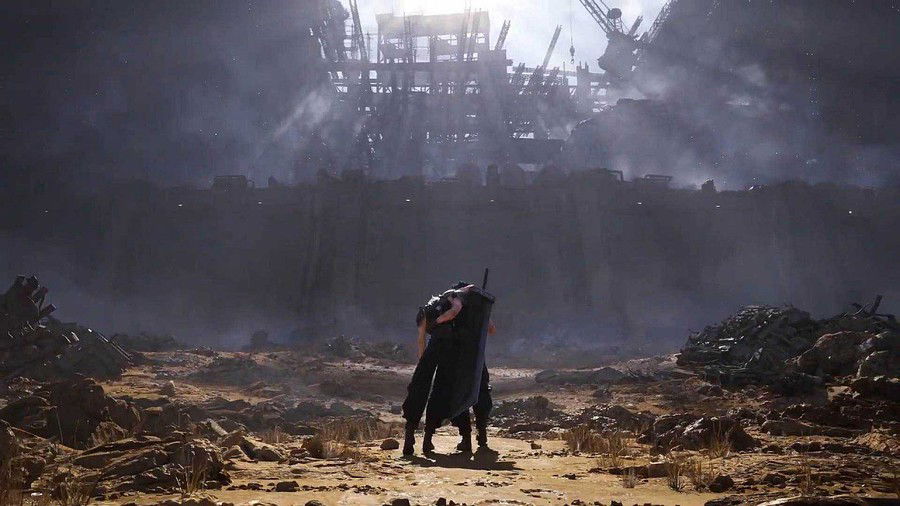
Rebirth takes advantage of this interaction and goes to great lengths to immerse the interlocutor in deeper themes and conflicts of the main characters. It pulls us into the abyss, makes us feel bad or emotional about what we are witnessing, and then resumes its path back to the “normality” of walking with Cloud across the map.
The game clearly expresses how heavy the burden is for each character, its dialogues are perfectly written to express their suffering without going through much exposition, and in the end, when it imposes on us the role of taking control over the story, we can feel the weight in our controls and the buttons we press to perform one action or another, making this title one of the most important in the series in terms of writing and interactivity.
We don't need to take everything so seriously
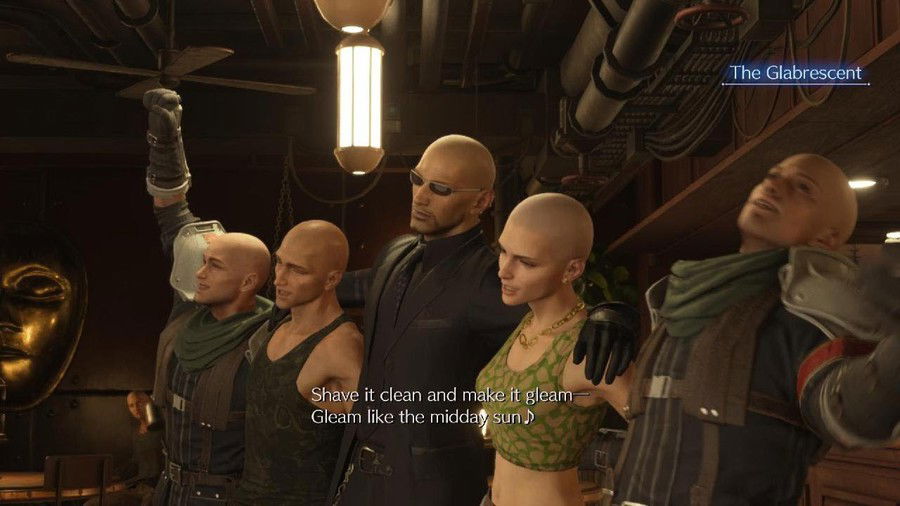
Fortunately, the deep writing and dramatic dilemmas don't make this a dark, depressing game with nihilistic perspectives on reality - Yes, there are moments capable of making players feel bad, but for each of them, there are also scenes and dialogues filled with a unique sense of humor.
Final Fantasy VII Rebirth doesn't feel obliged to take itself seriously all the time and knows how to balance the heartbreak with relaxed or nonsensical situations to break the ice around the suspense or drama, without seeming too silly or too cringe at all.
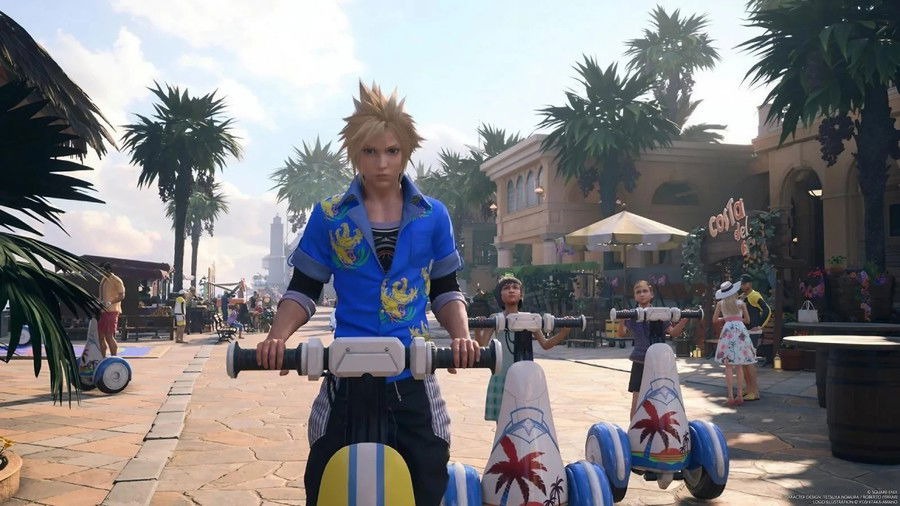
Sometimes, that punch in the gut from the previous scene is soon replaced by good laughs from a dialogue between the heroes, or even an unexpected comic relief to remind the player that despite the challenges, the journey around the world is also made up of good times with your friends.
Mixing the intensity of Final Fantasy VII's story with relaxed situations and comic relief creates a perfect balance between the individuality in the protagonists' dilemmas with the beauty in the collective nature of their bonds.
It's almost as if the game told us "we don't need to face everything alone or face everything all the time, pain is not the only thing that exists" - A metaphor comparable to the vast world where FFVII Rebirth is set, surrounded of beauty and natural wonders despite the cruel and relentless human intervention on the planet.
Brand New Old World
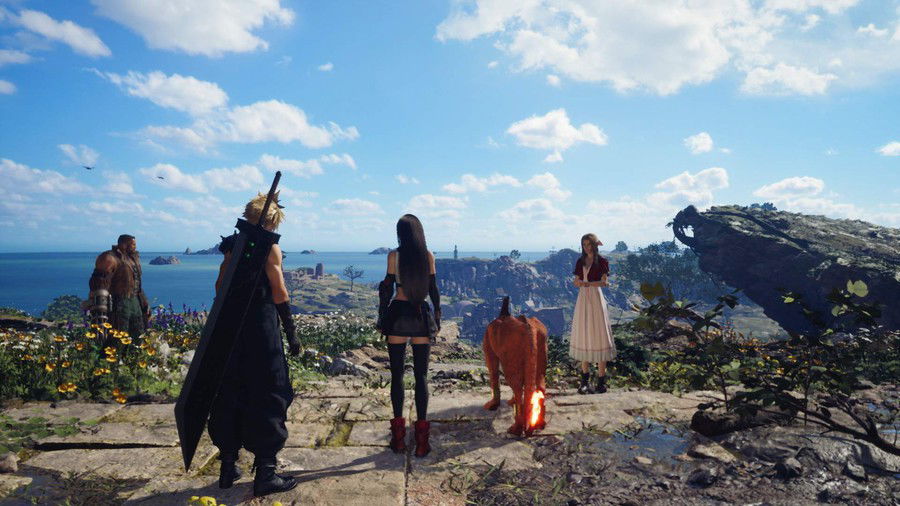
It takes just over an hour for Final Fantasy VII Rebirth to throw us into the wilds - enough and necessary time to deepen its plot and create the first conflicts around the journey in the game's vast world, which is divided into five regions, each with distinct fauna and flora, presented both in visuals and in locomotion.
Its open world is not the most detailed or beautiful the PlayStation 5 has to offer and doesn't have aesthetic depth comparable to titles like Ghost of Tsushima, in addition to failing in some details, such as the lack of movement of flowers or grass when characters move through it or even interaction between spells and the environment, which Final Fantasy XV adopted in its open world and wasn't explored as it should in its practical execution.
Speaking of FFXV, Rebirth adopts many aspects of its open-world predecessor while seeking to improve on its flaws. For the most part, with great success: the regions have excellent visual diversity and its cities, always full of secondary activities and NPCs, are much more rewarding to explore and bring the feeling of a vivid land both to ordinary people in their daily routines and to the various animals that we see running or nesting in different areas of the maps.

Another highlight is the way the regions communicate with the game's story and the construction of lore surrounding it: with the current graphics, it becomes easier to visually explain how the exploration of Mako affected the environment and the lives of the people, which grants a more profound understanding on the consequences of Shinra's expansion and the social inequality around it.
NPCs help to deepen the scenario even when we cannot interact with them, whether through dialogue with others, or through the way their clothing changes depending on the social condition where their region is located.
Chadley? Ah… That Chadley
All of its depth around building a coherent open world took its toll: much of the exploration in FFVII Rebirth revolves around one character - Chadley - the android responsible for creating Materia and the Combat Simulator in the Remake.
Chadley appears in the game as a traveler seeking to see more of the world, and counts on your help to reactivate towers and find treasures, sanctuaries, threatening monsters and other discoveries to expand the available materias, levels in the combat simulator and even the possibility of facing Summons to obtain them.

While the activities are fun and motivate players to explore the world searching for each sanctuary and treasures for the first time. In the tenth, it feels like just repeating the same activity to get the same results, with literally no changes on the outcome, which makes it feel a bit outdated to the current standards.
The biggest problem with this open world scheme and its activities is how they are all tied to using the towers to discover new objectives and then moving towards them until you find the next tower. There's no sense of exploration or achievement in discovery if you don't want to - just go from point A to point B, and you'll find what you're looking for with no challenge at all.
There is another, slightly more annoying headache in these activities: Chadley himself and his new artificial intelligence companion, Mai. When we approach an activity pointed out by the towers or when we complete them, Chadley or Mai will start a dialogue - Sometimes, they occur while Cloud continues to move, whereas in other situations, the hero needs to pick up his communication device to talk to one of them.
Generally, the info provided is something about the game's elementary exploration stuff, such as saying that your Summon became stronger after visiting a Sanctuary, or pointing out that you found a new area with hidden treasures, or even informing you about a new level in the combat simulator - Great when we're getting to know the game, but absurdly redundant as we get used to it.
In addition to this unnecessary time consumption, Chadley occasionally makes remarks about one activity or another that we haven't completed yet and gives the feeling that we are working for him, so he ends up overstaying his welcome by a wide margin.
Kweh? Kweh!
Chocobos exist in FFVII Rebirth to help with exploration, in addition to becoming mandatory for certain quests, giving them a much greater importance in this game than in the original work.
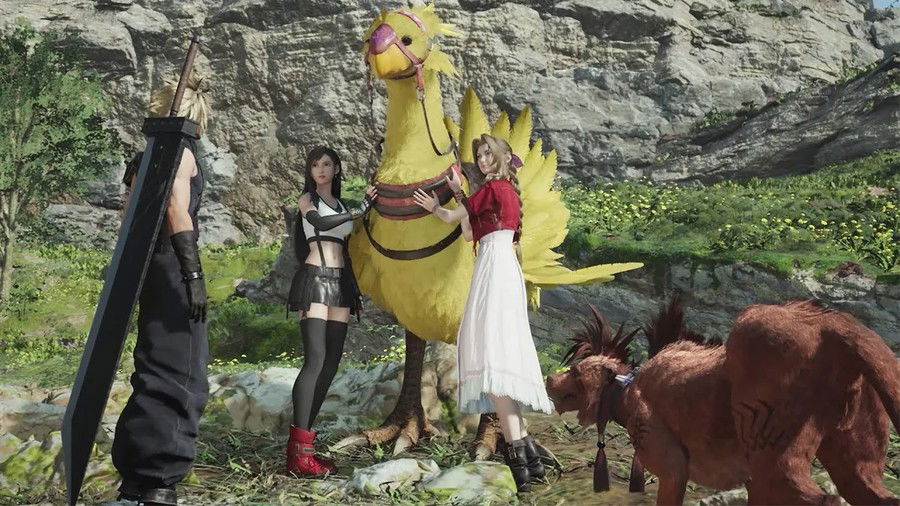
Each region has a distinct species of Chocobo, adapted to walk and interact with the map's main features, whether climbing walls or jumping onto platforms to fly from one area to another. They can also find hidden treasures around the map, such as rare minerals or money, motivating players to use them during exploration.
However, its controls are quite complicated: Chocobos walk very slowly and run very fast, and if they bump into a rock or even an enclosure, they get scared and stop, forcing the player to press the buttons again to climb over the obstacle and/ or you have to walk around it to run once more, disrupting navigation to the point where it is preferable to use them for specific situations and explore the rest of the region on foot.
There is a middle ground between walking and running, whose speed is similar to Cloud's as he walks or runs through open fields, but the button layout for speeding up and the difficulty in handling Chocobos in tighter areas can cause them to run faster with just one swipe, creating a frustrating experience since there is a noticeable lack of lightness in the controls to handle them.
How to Improve a Perfect Combat?
Final Fantasy VII Remake had a huge highlight in its combat system, where real-time action was mixed with the efficient use of ATB to create new interaction and strategic challenges when selecting skills, spells, or items to use, there was balance where no other real-time game in the series had achieved, making it acclaimed by critics and fans as the perfect action combat scheme.

FFVII Rebirth follows the same mold and doesn't seek to bring major innovations to the ATB, but in addition to introducing new combat styles with new characters, the game has new Synergy skills where two of them join up to perform a special attack, which also grants some temporary buff such as a third ATB or free MP costs. It is also a great homage to one of Square's most acclaimed RPGs in the 90s, Chrono Trigger.
The three new characters also bring other new approaches to combat, and Rebirth does an excellent job of making them necessary and unique throughout the plot, motivating players to enhance their experience with each character and explore every possibility.

Unfortunately, Cait Sith falls behind in this regard. His gameplay is the most unique of the team in this game and there are probably ways to make him a busted ally in battles - However, for practical purposes, he has the least reliable abilities in the party, and ends up being safer to use him in the most generic way possible: attack, charge ATB and use damage or support spells for other characters.
More Customization, More Possibilities
While the combat doesn't try to innovate as much, character customization has gone up to the next level in Rebirth.
Characters can now acquire new bonuses, statuses and even new skills through points acquired as we gain levels and/or find folios which grant this increase, similar to how they allowed us to improve our weapons in the Remake.

One of the biggest benefits of this new system is the possibility of using elemental attacks without having to consume MP or equip a Materia of that element, or gain new synergy skills, but it also allows customizing characters around specific builds as we gain levels and progress with the story.
The customization potential goes beyond the benefits of these abilities and includes new Materia types, such as those which grant an extra level to the spell or ability connected to it, or those that allow an uncontrolled character to use their unique attack without a direct command, or even the possibility of using two different magic elements with a single slot - in addition to there being accessories coupled with Materia!
Weapons also have their differences: in addition to the unique skills that we can master as we use them in battles, each weapon has a space to add buffs, ranging from increased HP to more specific effects for each character, such as increasing the duration of an ability or grant an extra benefit when using it.
Mini Games, Mini Games everywhere!
More recent titles in the franchise have received some criticism related to the lack of minigames and extra activities that went beyond combat, reducing their longevity or even allowing a brief relaxing activity between one portion of the story and another - Rebirth addresses this problem with a dozen minigames for all tastes!
From the traditional Fort Condor, presented in Episode Integrade to a Space Invaders simulator, goint through Chocobo racing, a fighting simulator, soccer, among other options, the new chapter of the trilogy has so many minigames which add many hours of gameplay to anyone interested in going through all of them and collecting all prizes.
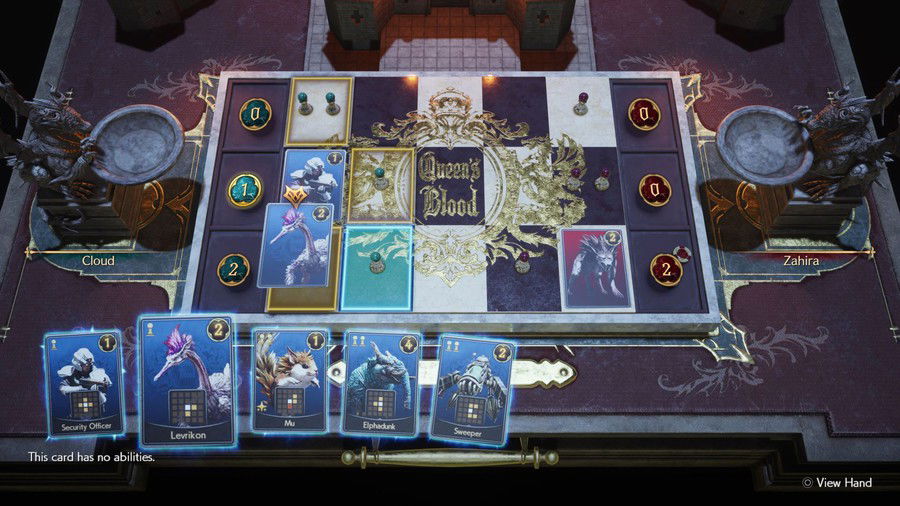
My favorite, perhaps due to my experience with Magic: The Gathering, was Queen's Blood: a strategic card game where we need to play cards to increase the level of our board to play stronger cards, while we expand our control and take spots which belongs to the opponent, or prevent them from taking ours - all while accumulating points.
Despite seeming difficult in theory, Queen's Blood is extremely intuitive for those used to card games and easy to understand in practice, but requires good strategic planning in higher level matches to triumph over your opponents, making it very rewarding and even more fun than the famous Triple Triad, from Final Fantasy VIII.
Mandatory Mini Games break the rhythm
But the new title also draws from the original FFVII's source in relocating some of its minigames as an integral part of the story, and does so quite frequently during some chapters, which makes the experience of going through them much more tiring, mainly because most of it takes place at a low part of the story and seem to be there just to occupy the player's time with activities before getting straight to the point.
There are exceptions, like the famous Chocobo racing whose stakes are even higher for Cloud and the others in Rebirth, and some other activities are so fun we can neglect having to go through them to progress in the story or even in a side quest.
Pros and Cons
Pros
Cons
Score
88 / 100
Conclusion
In its many beauty and flaws, Final Fantasy VII Rebirth honors the legacy left by the original work by delving deep enough into the characters and conflicts to give any fan that feeling of rediscovering old friendships and engaging in a new adventure with them in a familiar yet entirely redesigned world, while providing one of the best contemporary RPG experiences for those who didn't experience Final Fantasy VII on PlayStation One.
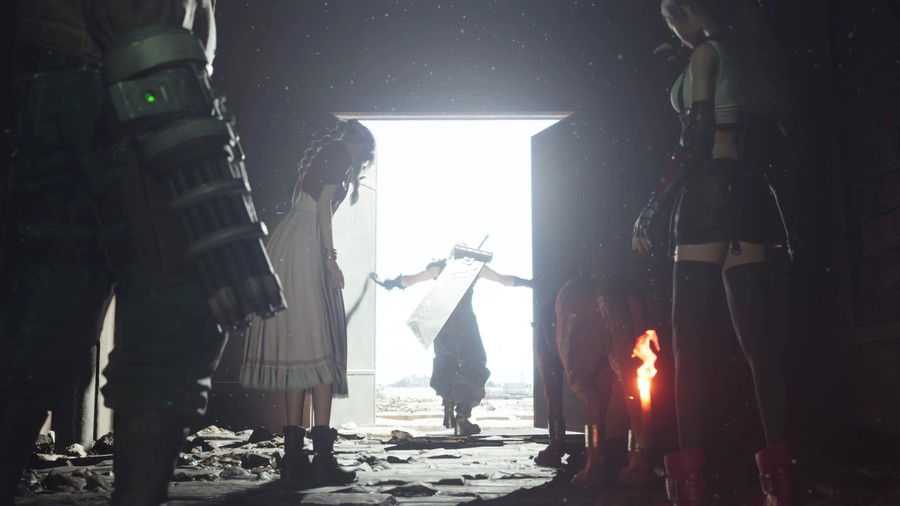
Like a long-standing relationship, the title has undergone changes over the decades and presents itself as a more mature, deeper game, with a greater understanding of human emotions and what they mean. Just like when we first saw it in 1997, it is far from perfect, but we appreciate its qualities and personality so much that we have learned to accept its flaws and understand how to deal with them.
Seeing such remarkable characters again was like being at a long-awaited reunion that took years to happen, and it will take a few more for us to have another moment like this - But the time spent together and the experiences and emotions felt during the unknown journey will remain in the memories, just as meaningful as every moment from the original game.
The second chapter in the Remake trilogy is the most beautiful love letter the developers could give to the fans and to the legacy of Final Fantasy VII in mainstream culture and in the franchise itself, every detail was thought of honoring its roots and deepening them in the heart of several generations to leave, once again, its mark in the gaming history.
Thanks for reading!

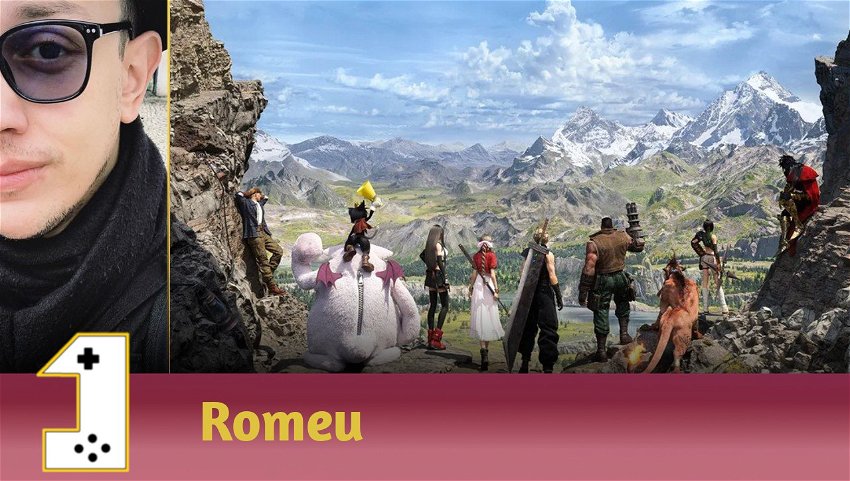





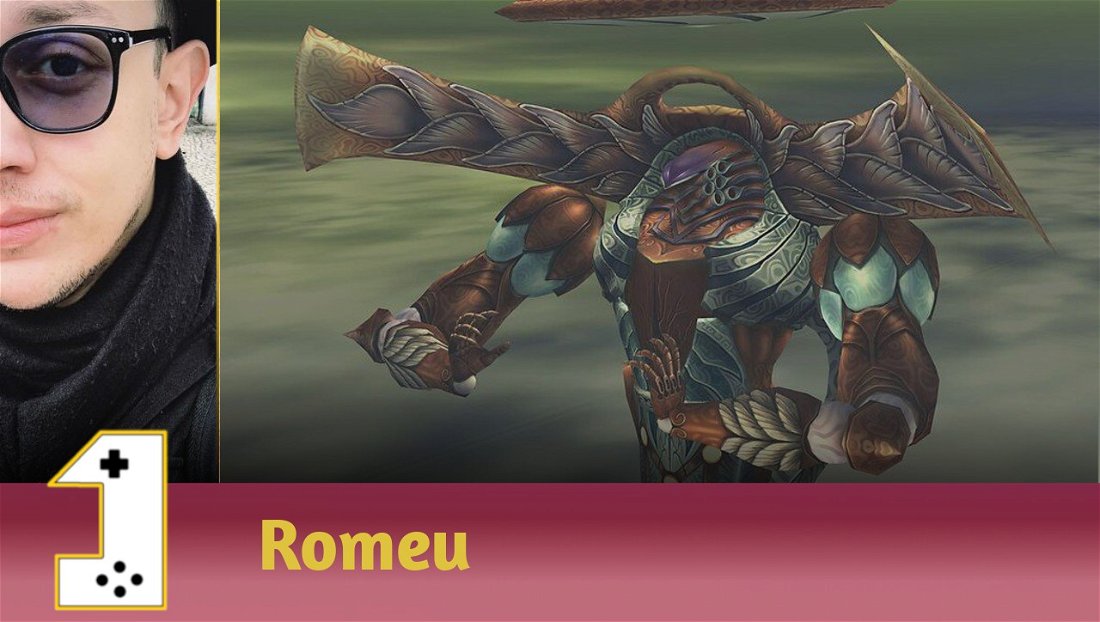
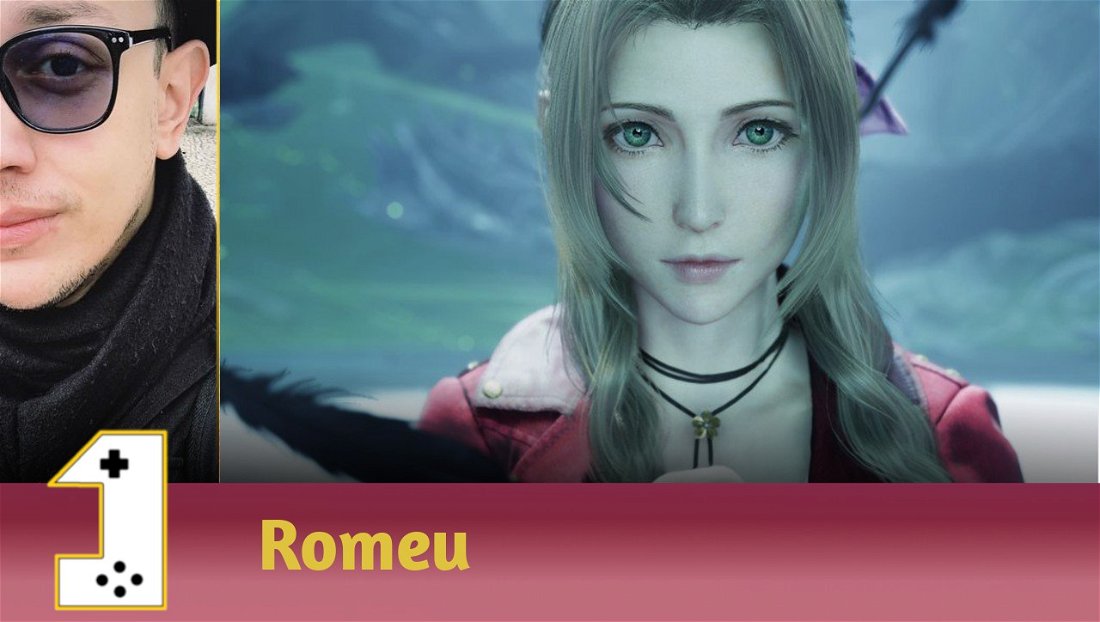



— 评论 0
, 反应 1
成为第一个发表评论的人